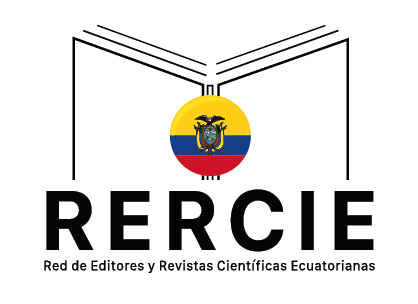Defining foreign language needs among pre-service CLIL teachers
DOI:
https://doi.org/10.36097/rsan.v0i49.1906Palabras clave:
bilingual education, english, foreign languages, primary education, teacher education.Resumen
CLIL (Content Language Integrated Learning) teacher training represents an educational challenge, where language competence and performance play a key role. So, the objective of the present research paper is to uncover the training needs of pre-service CLIL teachers (i.e., bachelor’s degree in Primary Education students, 2020-21) at the University of Cádiz (Spain) concerning their English Foreign Language (EFL) skills. This is a mixed-methods research with a descriptive approach, in which the main research tool is The CEFR ALTE Skill Level Summaries (Council of Europe, 2001). The data analysis is based on a statistical study supported by beliefs of the informants using a quiz-based assessment tool (Socrative). The results reveal that written skills prevail over oral skills in EFL terms; there still exists a low number of qualified pre-service CLIL teachers in EFL; they have not yet achieved the necessary EFL proficiency to teach CLIL subjects; and finally, methodological training is also required and not just language training as far as CLIL teaching is concerned. Final recommendations are suggested.
Descargas
Referencias
Bertaux, P., Coonan, C. M., Frigols, M. J., and Mehisto, P. (2009). The CLIL Teacher’s Competences Grid. Common Constitution and Language Learning (CCLL) Comenius-Network.
Chen, Z. and Goh, C. (2011). Teaching oral English in higher education: Challenges to EFL teachers. Teaching in Higher Education, 16(3), 333-345.
Consejería de Educación (2011). Orden de 28 de junio de 2011, por la que se regula la enseñanza bilingüe en los centros docentes de la Comunidad Autónoma de Andalucía. Boletín Oficial de la Junta de Andalucía.
Consejería de Educación (2015). Orden de 17 de marzo de 2015, por la que se desarrolla el currículo correspondiente a la Educación Primaria en Andalucía. Boletín Oficial de la Junta de Andalucía.
Cortina, B. and Pino, A. M. (2021). Analysing CLIL teacher competences in pre-service preschool education. A case study at the University of Granada. European Journal of Teacher Education. DOI: 10.1080/02619768.2021.1890021.
Council of Europe. (2001). Common European Framework of Reference for Languages: Learning, Teaching, Assessment. Cambridge: Press Syndicate of the University of Cambridge.
Coyle, D. (November 16, 2010). Levi Think Tank 2009-CLIL Cascade Network [Video]. Retrieved from: https://www.bibguru.com/es/g/cita-apa-video-de-youtube/
Coyle, D., Hood, P., and Marsh, D. (2010). CLIL: Content and Language Integrated Learning. Cambridge: Cambridge University Press.
Custodio, M. and García Ramos, J. M. (2020). Are accredited teachers equally trained for CLIL? The CLIL teacher paradox. Porta Linguarum, 33, 9-25.
Fortanet-Gómez, I. (2013). CLIL in Higher Education. Towards a Multilingual Language Policy. Bristol: Multilingual Matters.
Frigols, M. J. (2008). CLIL implementation in Spain: An approach to different models. In C. M. Coonan (Ed.), CLIL e L’apprendimento delle Lingue. Le Sfide del Nuovo Ambiente di Apprendimento (pp. 221-232). Venice: Libreria Editrice.
Lorenzo, F. (2019). Educación Bilingüe en Andalucía. Informe de Gestión, Competencias y Organización. Agencia Andaluza de Evaluación Educativa. AGAEVE. Consejería de Educación. Junta de Andalucía.
Milla, M. D. and Casas, A. (2018). Teacher perspectives on CLIL implementation: A within-group comparison of key variables. Porta Linguarum, 29, 159-180.
Papaja, K. (2014). Focus on CLIL: A Qualitative Evaluation of Content and Language Integrated Learning (CLIL) in Polish Secondary Education. Newcastle: Cambridge Scholar Publishing.
Pavón, V. and Rubio, F. (2010). Teachers’ concerns and uncertainties about the introduction of CLIL programmes. Porta Linguarum, 14, 45-58.
Pérez-Cañado, M. L. (2013). Introduction. In Revista de Lenguas para Fines Específicos, 19, 12-27.
Pérez-Cañado, M. L. (2018). CLIL and educational level: A longitudinal study on the impact of CLIL on language outcomes. Porta Linguarum, 29, 51-70.
Pérez-Cañado, M. L. (2020). CLIL-izing EMI: An evidence-based teacher education proposal in monolingual contexts. In C. Hemmi and d. L. Banegas (Eds.), International Perspectives in CLIL. London: Plagrave.
Romero, E. and Zayas, F. (2015). AICLE en la formación inicial de maestros: Representaciones y experiencias. In L. Cancelas and S. Sánchez (Eds.), Tendencias en Educación Lingüística (pp. 315-328). Granada: GEU.
Romero, E. and Zayas, F. (2017). Challenges and opportunities of training teachers for plurilingual education. In J. Valcke and R. Wilkinson (Eds.), Integrating Content and Language in Higher Education (pp. 205-226). Frankfurt: Peter Lang.
San Isidro, X. (2018). Innovations and challenges in CLIL implementation in Europe. Theory Into Practice, 57(3), 185-195. DOI: 10.1080/00405841.2018.1484038.
Working CLIL Digital (May 28, 2018). Professor Do Coyle - What Isn’t CLIL? YouTube. Retrieved from: https://www.youtube.com/watch?v=0vksvYEFTdk















